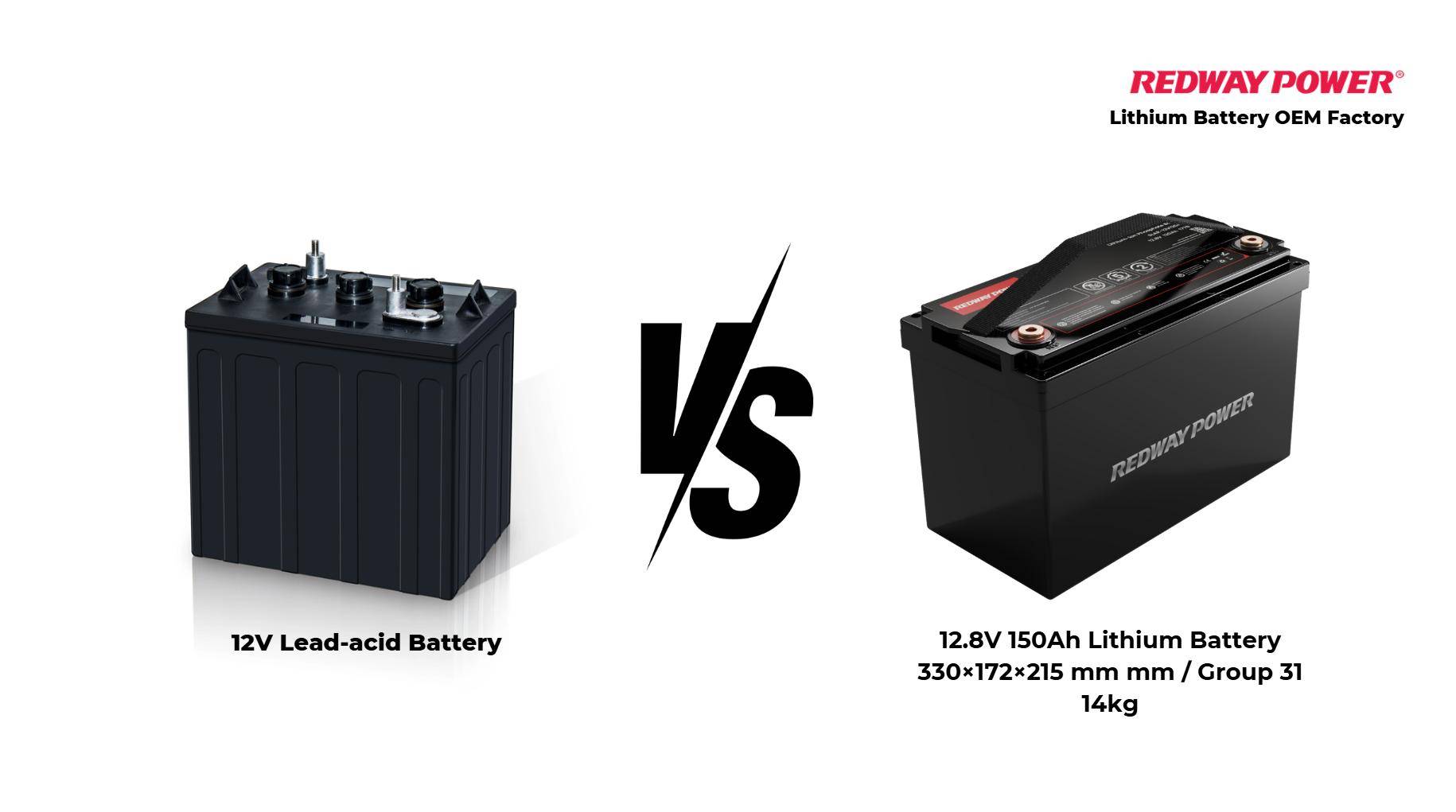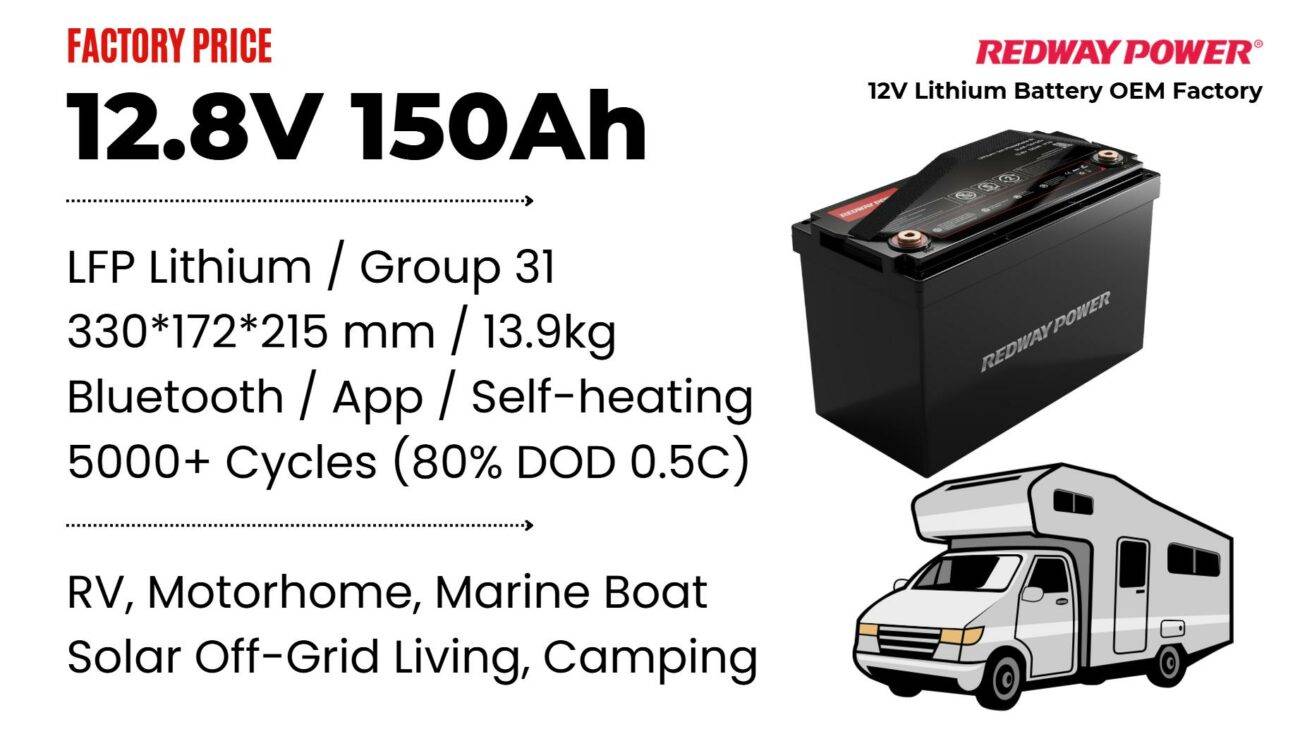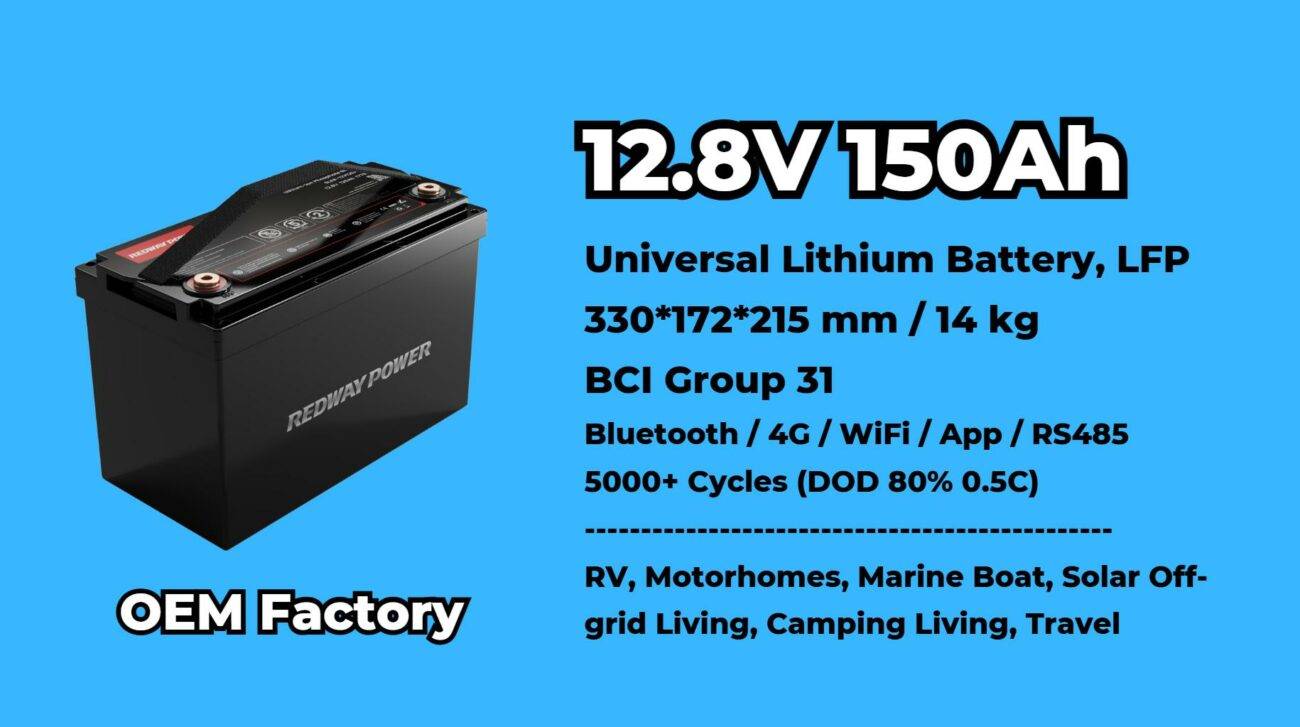- Forklift Lithium Battery
-
48V
- 48V 210Ah
- 48V 300Ah
- 48V 420Ah (949 x 349 x 569 mm)
- 48V 420Ah (950 x 421 x 450 mm)
- 48V 456Ah
- 48V 460Ah (830 x 630 x 590 mm)
- 48V 460Ah (950 x 421 x 450 mm)
- 48V 460Ah (800 x 630 x 600 mm)
- 48V 460Ah (820 x 660 x 470 mm)
- 48V 500Ah
- 48V 560Ah (810 x 630 x 600 mm)
- 48V 560Ah (950 x 592 x 450 mm)
- 48V 600Ah
- 48V 630Ah
-
48V
- Lithium Golf Cart Battery
- 12V Lithium Battery
12V 150Ah Lithium RV Battery
Bluetooth App | BCI Group 31
LiFePO4 Lithium
Discharge Temperature -20°C ~ 65°C
Fast Charger 14.6V 50A
Solar MPPT Charging - 24V Lithium Battery
- 36V Lithium Battery
- 48V Lithium Battery
-
48V LiFePO4 Battery
- 48V 50Ah
- 48V 50Ah (for Golf Carts)
- 48V 60Ah (8D)
- 48V 100Ah (8D)
- 48V 100Ah
- 48V 100Ah (Discharge 100A for Golf Carts)
- 48V 100Ah (Discharge 150A for Golf Carts)
- 48V 100Ah (Discharge 200A for Golf Carts)
- 48V 150Ah (for Golf Carts)
- 48V 160Ah (Discharge 100A for Golf Carts)
- 48V 160Ah (Discharge 160A for Golf Carts)
-
48V LiFePO4 Battery
- 60V Lithium Battery
-
60V LiFePO4 Battery
- 60V 20Ah
- 60V 30Ah
- 60V 50Ah
- 60V 50Ah (Small Size / Side Terminal)
- 60V 100Ah (for Electric Motocycle, Electric Scooter, LSV, AGV)
- 60V 100Ah (for Forklift, AGV, Electric Scooter, Sweeper)
- 60V 150Ah (E-Motocycle / E-Scooter / E-Tricycle / Tour LSV)
- 60V 200Ah (for Forklift, AGV, Electric Scooter, Sweeper)
-
60V LiFePO4 Battery
- 72V~96V Lithium Battery
- Rack-mounted Lithium Battery
- E-Bike Battery
- All-in-One Home-ESS
- Wall-mount Battery ESS
-
Home-ESS Lithium Battery PowerWall
- 24V 100Ah 2.4kWh PW24100-S PowerWall
- 48V 50Ah 2.4kWh PW4850-S PowerWall
- 48V 50Ah 2.56kWh PW5150-S PowerWall
- 48V 100Ah 5.12kWh PW51100-F PowerWall (IP65)
- 48V 100Ah 5.12kWh PW51100-S PowerWall
- 48V 100Ah 5.12kWh PW51100-H PowerWall
- 48V 200Ah 10kWh PW51200-H PowerWall
- 48V 300Ah 15kWh PW51300-H PowerWall
PowerWall 51.2V 100Ah LiFePO4 Lithium Battery
Highly popular in Asia and Eastern Europe.
CE Certification | Home-ESS -
Home-ESS Lithium Battery PowerWall
- Portable Power Stations
Can I Use a 12V Lithium Battery in Place of a Standard Lead-Acid Battery?

The transition from standard lead-acid batteries to 12V lithium batteries has become increasingly common in various applications. While it is indeed possible to replace a lead-acid battery with a lithium counterpart, several important factors must be considered to ensure optimal performance and safety.
Key Considerations
Compatibility
- Voltage: Both 12V lithium and lead-acid batteries operate at the same nominal voltage. This compatibility allows for seamless integration into most systems, making it easier to upgrade without major modifications.
- Charging System: One of the most critical aspects to verify is the compatibility of your charging system. Lithium batteries require specific charging profiles, often necessitating a Battery Management System (BMS). This system is essential for safely and efficiently managing the charging process, protecting the battery from overcharging and deep discharging.
Weight and Size
Lithium batteries are significantly lighter and more compact than their lead-acid counterparts. For example, a 100Ah lead-acid battery can weigh around 61.7 lbs, whereas a comparable lithium battery may weigh only about 22.9 lbs. This weight advantage is particularly beneficial in applications like marine or RV use, where space and weight are critical considerations.
Cycle Life and Longevity
One of the standout features of lithium batteries is their cycle life. They typically offer up to 6,000 cycles at 50% depth of discharge (DoD), compared to about 2,000 cycles for lead-acid batteries. Although the initial cost of lithium batteries is higher, their longevity can lead to greater cost-effectiveness over time, making them an appealing option for long-term investments.
Maintenance
Lithium batteries are virtually maintenance-free. Unlike lead-acid batteries, which require regular checks for water levels and specific gravity, lithium batteries demand minimal upkeep. This low-maintenance requirement can save both time and effort in the long run, making them more convenient for users.
Performance
In terms of performance, lithium batteries excel in several areas:
- Faster Charging: They charge much quicker than lead-acid batteries, reducing downtime significantly. This feature is particularly advantageous for applications where quick recharges are necessary.
- Partial Discharge Resilience: Lithium batteries maintain capacity better under partial discharge conditions, ensuring that performance does not degrade significantly even when not fully charged.
Cost
While the upfront cost of lithium batteries is generally higher—often costing about twice as much as lead-acid options—their longer lifespan and reduced maintenance needs can justify the initial investment over time. In many cases, the total cost of ownership is lower for lithium batteries when considering their durability and performance.
Safety Features
A quality lithium battery will include a robust BMS that continuously monitors performance and protects against potential hazards, such as overcharging, deep discharging, and short circuits. This enhances safety during operation, giving users peace of mind.
Conclusion
In summary, using a 12V lithium battery in place of a standard lead-acid battery is not only feasible but can also provide numerous advantages, including reduced weight, longer lifespan, minimal maintenance, and enhanced performance. However, it is crucial to ensure compatibility with existing systems and understand the specific requirements for charging and usage. By considering these factors, you can maximize the benefits of lithium technology in your applications.


















